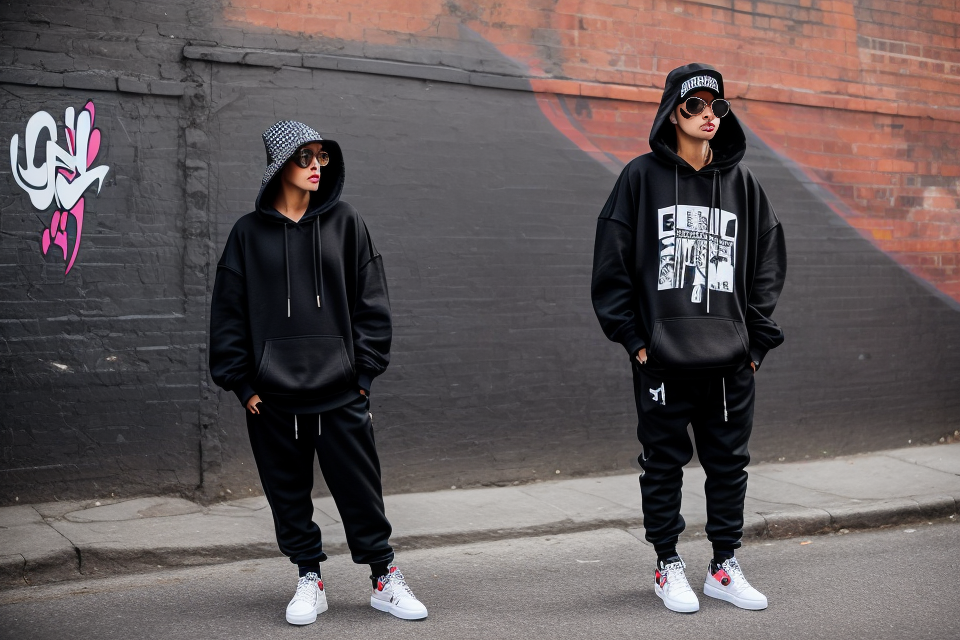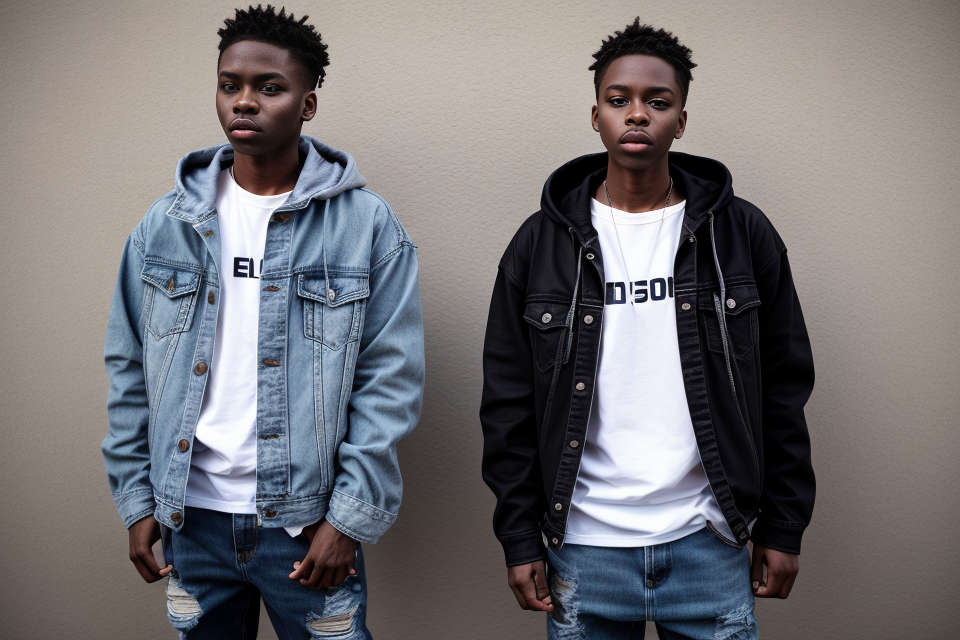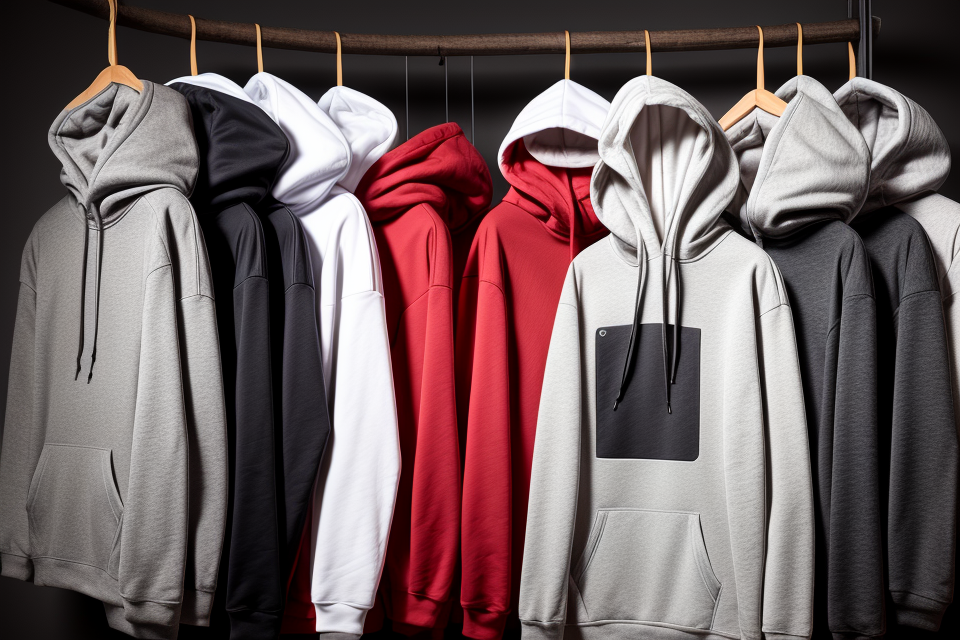Hoodies have been around for decades, but when did they become a popular fashion statement? This question has been on many people’s minds, as hoodies have become a staple in many wardrobes. From sports teams to streetwear, hoodies have made their way into various aspects of our lives. In this article, we will explore the history of hoodies and when they became a popular fashion choice. Get ready to learn about the rise of this iconic garment and how it has become a symbol of style and comfort.
The popularity of wearing hoodies can be traced back to the 1970s, when they were first introduced as a casual, sporty garment. However, it wasn’t until the 1990s that hoodies gained widespread popularity, particularly among young people. This was due in part to the rise of hip-hop culture, which embraced the hoodie as a fashion statement. In recent years, hoodies have continued to be a popular choice for both casual and high-fashion settings, and are often worn as a statement piece or as part of a uniform. Today, hoodies can be seen on people of all ages and backgrounds, and are widely regarded as a wardrobe staple.
The History of Hoodies
The Early Years
The Original Purpose of Hoodies
In the early years, hoodies were primarily designed as a utilitarian garment for workers, particularly those in outdoor professions such as farmers, fishermen, and lumberjacks. These early hoodies were typically made of heavy fabrics like wool or denim, and featured a hood to protect the wearer’s head and neck from harsh weather conditions.
Hoodies also gained popularity as a fashion statement for athletes, particularly those participating in sports that required a level of comfort and flexibility. Early hoodies were often worn by wrestlers, gymnasts, and other athletes who needed to move freely without being constrained by traditional clothing.
However, it wasn’t until the 1970s that hoodies began to be associated with youth culture and streetwear fashion. The hip-hop scene in New York City popularized the wearing of hoodies as a way to express rebellion and defiance against mainstream fashion norms. The oversized silhouette and the hoodie’s ability to be worn with a variety of clothing styles made it a staple of urban fashion, and its popularity continued to grow throughout the 1980s and 1990s.
The Evolution of Hoodies
The Origins of Hoodies
Hoodies, as we know them today, have been around since the 1930s, but their origins can be traced back even further. The earliest versions of hoodies were actually designed as utilitarian garments for laborers and workers who needed a garment that could protect them from the elements while they worked.
The Transition to Casual Wear
In the 1970s, hoodies began to transition from being purely functional garments to being fashionable items of clothing. This was due in part to the rise of sportswear and athletic fashion, which helped to popularize the hoodie as a casual, everyday garment.
The Emergence of Streetwear
One of the most significant factors in the popularization of hoodies was the rise of streetwear in the 1980s and 1990s. Streetwear, which is a style of fashion that originated in urban environments, helped to make hoodies a staple of urban fashion.
In particular, hip-hop culture played a major role in popularizing hoodies. Many early hip-hop artists and fans adopted hoodies as a symbol of their subculture, and the garment quickly became associated with the hip-hop lifestyle.
As hip-hop and streetwear continued to gain popularity, hoodies became increasingly mainstream, and they began to be adopted by people of all ages and backgrounds. Today, hoodies are a ubiquitous part of modern fashion, and they can be seen on people all over the world.
The Mainstreaming of Hoodies
The popularity of hoodies can be traced back to the 1970s, when it was first introduced as a garment for laborers and athletes. However, it was not until the 1990s that hoodies became a fashion statement, particularly among urban youth. The mainstreaming of hoodies can be attributed to several factors, including celebrity endorsements and the rise of streetwear fashion.
Celebrity Endorsements
Celebrities have played a significant role in popularizing hoodies. In the 1990s, rappers and hip-hop artists were often seen wearing hoodies in their music videos and on stage, making it a fashion statement among their fans. This trend continued into the 2000s, with celebrities such as Jay-Z, Kanye West, and Beyoncé frequently seen wearing hoodies in public.
In addition to celebrities, sports figures have also contributed to the popularity of hoodies. Basketball players, in particular, have been known to wear hoodies under their jerseys, and many have even designed their own lines of hoodies. The trend has since spread to other sports, with athletes in football, soccer, and even golf being seen wearing hoodies.
Another factor contributing to the mainstreaming of hoodies is the rise of streetwear fashion. Streetwear is a style of fashion that originated in urban areas and is characterized by its casual, relaxed look. Hoodies are a staple of streetwear fashion, and as the style gained popularity in the 1990s and 2000s, so did the hoodie.
Today, hoodies are a common sight in many parts of the world, worn by people of all ages and backgrounds. They have become a versatile garment that can be dressed up or down, making them a wardrobe staple for many. While the hoodie was once a symbol of rebellion, it has since become a mainstream fashion item that can be found in almost any clothing store.
The Influence of Hoodies on Fashion
Hoodies in High Fashion
Hoodies have been around for decades, but it wasn’t until recently that they made their way into high fashion. Designers have started to incorporate hoodies into their collections, and the trend has only continued to grow. Here are some reasons why hoodies have become popular in high fashion:
Designer Collaborations
One of the main reasons why hoodies have become popular in high fashion is due to designer collaborations. Luxury fashion brands have started to create hoodies as part of their collections, which has helped to elevate the status of the garment. These collaborations have also helped to bring hoodies into the mainstream fashion world, making them a staple piece in many wardrobes.
For example, the Italian luxury brand Gucci has released several hoodie designs, including a pink silk version with a matching scarf and a black cashmere version with a fur-trimmed hood. Similarly, the French brand Balenciaga has released a range of hoodies, including a cropped version with a belt and a long-sleeved version with a oversized logo.
These designer collaborations have helped to redefine the hoodie as a fashionable piece, rather than just a casual garment. The inclusion of high-end materials and unique designs has made hoodies a desirable item for fashion-conscious consumers.
Hoodies as a Status Symbol
Another reason why hoodies have become popular in high fashion is because they have become a status symbol. Wearing a designer hoodie can be seen as a symbol of wealth and success, and many people are willing to pay a premium for these items. The hoodie has become a way for people to show off their status and to make a statement about their personal style.
In addition, hoodies have become a popular choice for streetwear and athleisure wear, which has further increased their popularity in high fashion. The comfortable and casual nature of hoodies makes them a practical choice for everyday wear, but the addition of high-end materials and designs has made them a fashionable choice as well.
Overall, the rise of hoodies in high fashion can be attributed to a combination of designer collaborations and their status as a symbol of wealth and success. As the trend continues to grow, it will be interesting to see how hoodies continue to evolve and change the fashion industry.
Hoodies as a Unisex Garment
Hoodies have traditionally been associated with sportswear and casual attire, but in recent years, they have become a staple in fashionable wardrobes for both men and women. The rise of gender-neutral fashion has played a significant role in the popularity of hoodies as a unisex garment.
Gender-Neutral Hoodies
As the fashion industry has become more inclusive, designers have begun to create hoodies that are designed for all genders. These hoodies often feature simple, minimalist designs and are made from high-quality materials, such as cotton and fleece.
Some fashion brands have even started to release entire collections of gender-neutral clothing, including hoodies, that are designed to be worn by anyone, regardless of their gender identity. This has led to a growing trend of hoodies being worn by individuals who identify as neither male nor female, as well as those who identify as non-binary or genderqueer.
Furthermore, many celebrities and influencers have been seen wearing hoodies as part of their everyday wardrobe, further boosting the popularity of this garment. The versatility of hoodies, combined with their comfort and simplicity, has made them a staple for those who want to express their personal style without conforming to traditional gender norms.
As a result, hoodies have become a symbol of gender-neutral fashion and have helped to challenge traditional notions of masculinity and femininity in the fashion industry. This trend is likely to continue as more designers and brands embrace gender-neutral clothing and encourage individuals to express their unique style without limitations.
The Future of Hoodies
Sustainability and Ethical Production
As the popularity of hoodies continues to rise, there is a growing concern about the environmental impact of their production and the ethical implications of the supply chain. Many brands are now turning to sustainable and ethical production methods to meet the demand for hoodies while minimizing their impact on the environment.
Environmental Impact of Hoodies
The production of hoodies requires significant resources, including water, energy, and raw materials. The dyeing and finishing processes can also release harmful chemicals into the environment. As a result, the fashion industry has become one of the largest polluters in the world.
To mitigate the environmental impact of hoodies, many brands are turning to sustainable materials. Organic cotton, for example, is grown without synthetic pesticides and fertilizers, reducing the use of harmful chemicals in the production process. Other sustainable materials include bamboo, hemp, and recycled polyester.
In addition to using sustainable materials, some brands are also implementing sustainable production methods. This includes using renewable energy sources, reducing water usage, and implementing recycling programs to minimize waste.
However, sustainability and ethical production go beyond just the environment. Many brands are also focusing on fair labor practices, ensuring that workers are paid a living wage and working in safe conditions. This includes sourcing materials from suppliers who adhere to ethical standards and working with factories that prioritize worker safety and well-being.
Overall, the future of hoodies lies in sustainable and ethical production. By reducing their environmental impact and prioritizing fair labor practices, brands can continue to meet the demand for hoodies while also promoting a more sustainable and ethical fashion industry.
The Evolution of Hoodie Design
Technology and Innovation
Hoodies with integrated technology
In recent years, the integration of technology into hoodies has become increasingly popular. Many brands are now producing hoodies with built-in technology, such as USB ports, headphone jacks, and even solar panels. These features make hoodies more functional and convenient for wearers, as they can charge their devices or listen to music without having to carry extra devices.
3D printing and customization
3D printing technology has also had an impact on the evolution of hoodie design. With 3D printing, designers can create custom hoodies with intricate designs and patterns that would be difficult or impossible to produce using traditional manufacturing methods. This has opened up new possibilities for fashion designers, who can now create unique and personalized hoodies for their customers. Additionally, 3D printing has made it possible to produce small batches of hoodies at a lower cost, which has helped to democratize the fashion industry and make high-quality hoodies more accessible to a wider audience.
The Changing Perception of Hoodies
The perception of hoodies has undergone a significant transformation over the years, as they have evolved from being associated with criminal activity to becoming a symbol of inclusivity and fashion statement. This shift in perception can be attributed to several factors, including the democratization of fashion and the decline of hoodie stereotypes.
The Democratization of Fashion
The democratization of fashion has played a crucial role in the changing perception of hoodies. With the rise of fast fashion and the accessibility of fashion through online platforms, hoodies have become more accessible to a wider range of consumers. As a result, hoodies have become a staple clothing item in many wardrobes, transcending social and economic barriers.
Additionally, the rise of streetwear and athleisure has further contributed to the popularity of hoodies. These styles have blurred the lines between fashion and function, making hoodies a versatile and practical garment that can be worn for various occasions.
The Decline of Hoodie Stereotypes
Another factor contributing to the changing perception of hoodies is the decline of stereotypes associated with them. For many years, hoodies were viewed as a symbol of criminal activity and were often associated with gangs and delinquents. However, as society has become more diverse and accepting, these stereotypes have faded away, and hoodies have become a more acceptable fashion choice for people of all backgrounds.
Furthermore, the media has played a significant role in challenging these stereotypes. Portrayals of hoodies in popular culture, such as in movies and TV shows, have often depicted them as a normal piece of clothing worn by ordinary people going about their daily lives. This has helped to normalize hoodies and break down the barriers that once surrounded them.
In conclusion, the changing perception of hoodies can be attributed to the democratization of fashion and the decline of stereotypes associated with them. As hoodies have become more accessible and versatile, they have evolved from being a controversial garment to a staple fashion item in many wardrobes.
FAQs
1. When did people start wearing hoodies?
Hoodies have been around since the early 20th century, but they gained popularity in the 1980s and 1990s as a casual, sportswear garment. The hoodie’s rise to fashion prominence can be attributed to various factors, including its practicality, versatility, and association with popular culture.
2. What was the first hoodie?
The first hoodie was likely created in the early 20th century as a utilitarian garment for workers, such as farm laborers and longshoremen. These early hoodies were often made of heavy fabrics like denim or chambray and featured a front pocket. The hood was added to protect the wearer’s head and neck from the elements.
3. What was the role of sports in making hoodies popular?
Sports played a significant role in the popularization of hoodies. Many sports teams, especially those in colder climates, adopted hoodies as part of their uniforms. The hoodie became associated with a casual, relaxed, and comfortable style of dress, which appealed to a wider audience beyond sports enthusiasts.
4. How did hip-hop culture influence hoodie fashion?
Hip-hop culture, particularly in the 1980s and 1990s, significantly impacted the popularity of hoodies. Hip-hop artists and fans adopted the hoodie as a fashion statement, showcasing their preference for a relaxed, comfortable style. The hoodie became synonymous with urban streetwear, and its popularity spread to other fashion segments.
5. Why are hoodies still popular today?
Hoodies remain popular today due to their comfort, versatility, and practicality. They can be worn for both casual and formal occasions, and their design allows for easy layering with other clothing items. The hoodie’s popularity has also transcended borders, becoming a global fashion statement that appeals to people of all ages and backgrounds.
6. Are hoodies only popular among younger people?
Hoodies were once primarily associated with younger people, particularly those in the hip-hop and skateboarding subcultures. However, as the fashion industry has evolved, hoodies have become a mainstream fashion item, with people of all ages embracing the style. Today, hoodies are commonly seen on people of all ages, from teenagers to adults, and from casual wearers to high-fashion enthusiasts.
7. What is the difference between a sweatshirt and a hoodie?
A sweatshirt and a hoodie are similar in design, but a hoodie typically features a full-length hood while a sweatshirt has a smaller hood or no hood at all. Hoodies are often made of thicker, warmer fabrics than sweatshirts, making them more suitable for colder weather. However, there is significant overlap between the two garments, and many people use the terms interchangeably.



